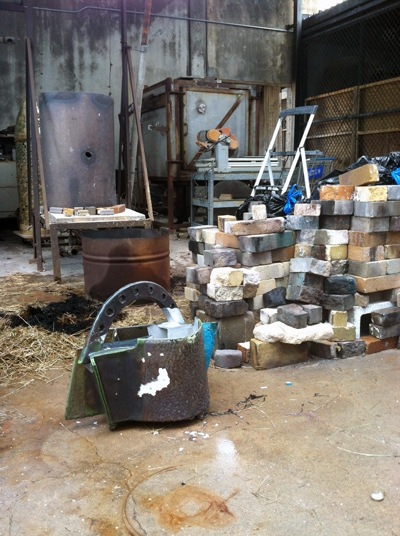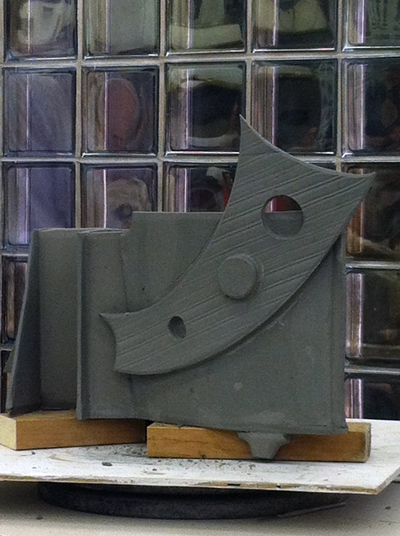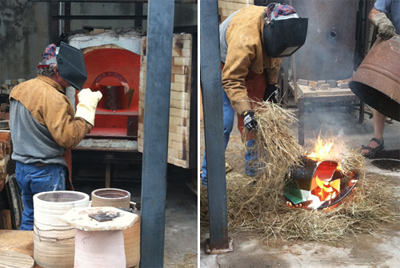The morning after the opening of his exhibition, Texas Masters Series: Piero Fenci—Battlement, Piero Fenci revealed the magic behind how he made his bold ceramic pieces during a public demonstration at the Glassell School of Art. The event was co-presented by the Glassell School and ClayHouston. An incredibly charismatic, likeable and humble artist, Fenci spent the next four hours making a new piece from start to finish and firing an already glazed example.
The demonstration started with the basics–how to construct a strong and sturdy clay slab. Fenci illustrated how he pounds coils together in rows and then rolls them together with a baker’s rolling pin. He prefers this to using a slab roller–a machine similar to a printing press–because he is able to work the clay from multiple directions with the rolling pin, creating a stronger material.
Once the slabs were formed and had dried to more of a leather-hard state, Piero began to piece together the walls of a piece. He built the external walls similar to how a carpenter would put together a house. This makes sense, as one of Fenci’s early careers was that of a carpenter, and he continues to use that approach when constructing his pieces. Throughout this phase of the demonstration, Fenci never missed a beat, continually describing his varied influences, from Japanese origami to Shaker hat boxes. He transfixed the audience with his ability to simultaneously physically build a work and provide verbal insight into his creative process.
Once the example piece was built, it was time to move on to the real excitement of the day: firing a piece. The thrill of fire never disappoints and, much like the tricks used on a cooking show, Fenci had a pre-made and pre-glazed work that was ready to be fired. As shown above, after being in the kiln, this piece became red hot! Next, Fenci removed the scorching piece with his gloved hands and placed the work on a bed of hay and grass. Once the organic material caught fire, a large barrel was quickly placed over the top, snuffing out the flames and creating a smoky environment inside. Similar to raku, this unique post-fire method allows Fenci to control the reduction on his work–where brilliant glazed crystals form and where the more ashen, dark surfaces appear.
I think my favorite image from the day is the final shot, after the work was uncovered from the barrel and hosed down with water. Some of the glaze clearly did not fuse, a result of the kiln not getting to temperature, but as Fenci poetically explained, we still learn from our mistakes, and there can still be beauty in our mistakes. I especially love how the brilliant blue tip on the right juts out and picks up the blue from the painter’s tape in the background.
–Anna Walker, HCCC Curator
(All photos by Anna Walker)





